What is a PAMM account?
A trader opens a PAMM account to offer investors the management of their funds. After that, anyone can invest money in his trade and make a profit together with an experienced trader, without trading on their own.
A PAMM account is a special trader's trading account in which investors can invest their money. After that, the total funds are involved in trading, and the profits received are distributed proportionally. A portion of the investors' profits is transferred to the trader as a reward. The PAMM account operates on the broker's site and all calculations are performed automatically.
Why do I need PAMM accounts?
Have you ever thought about how to increase your savings? You may already be investing in banks or real estate, buying stocks or bonds, investing in mutual funds, or investing in everything at once.
For a long time, the Forex currency market was inaccessible to a wide range of private investors. Independent trading on it requires serious training and experience — according to statistics, less than 5% of traders make a profit in the first year.
PAMM accounts also allow a private investor to transfer funds to an experienced trader through a transparent and secure broker service. By investing in a PAMM account, the investor transfers the money to the trader's management and gives part of his profit for this.
PAMM accounts give traders the opportunity to attract investments and earn additional profits on their trading.
How does a PAMM account work?
Technically, PAMM accounts operate on the basis of the broker's electronic platform, called a PAMM service. First of all, the trader trades on this platform. In addition, the broker provides a PAMM account service. You can select a trader's PAMM account in the rating, invest money in it and manage your investments through your personal account on the broker's website. Once a month, a portion of the investor's profit will be transferred to the manager as a reward.
After you have invested in a PAMM account, you will be able to monitor your profits in real time. You can withdraw funds or top up your account at any time, all operations are performed online and take no more than a day.
In the trader's personal account on the website and in the broker's terminal, the PAMM account is available as a trading account to which investors can connect their funds. A trader can choose an account type, trade on a PAMM account through the MetaTrader 5 terminal, connect trading systems, etc.
In addition to trading, the trader creates and publishes an investment offer, where he indicates the percentage of profit that he takes for management and the schedule when investors' requests for deposits and withdrawals are executed. Under the terms of this offer, investors invest money in his PAMM.
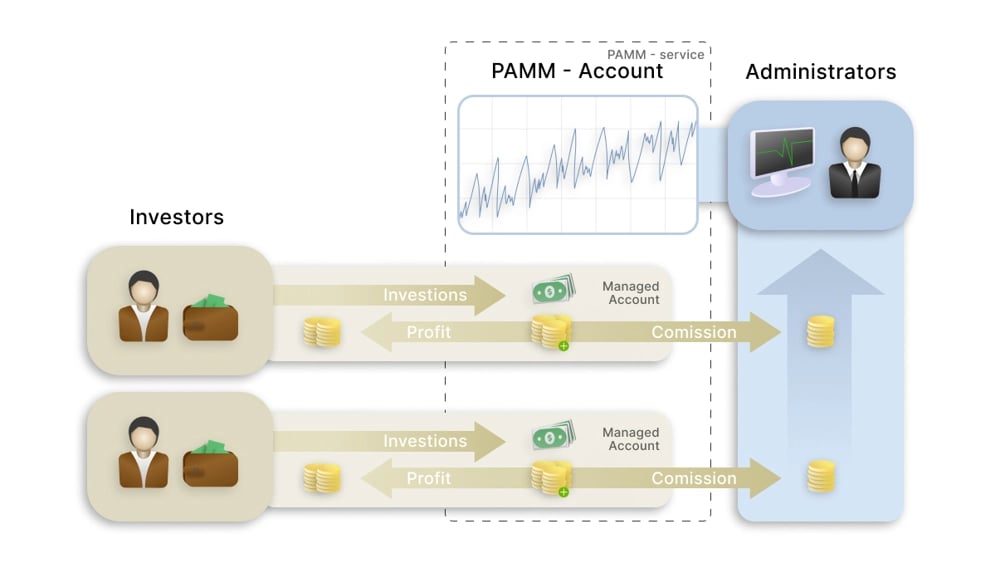
Principles of PAMM accounts operation
There are 3 parties involved in PAMM account management:
A manager is a trader who directly trades on the financial market. The manager trades on Forex or the metal market.
An investor is a person who transfers his funds to a PAMM manager in order to use them in trading and make a profit from it.
PAMM service is an electronic brokerage platform that automatically performs all operations and calculations between the investor and the manager.
The manager opens a PAMM account with the broker and starts trading on it using his system. As soon as the PAMM account is published, investors can find it online and invest money in it.
The investor selects the PAMM account of the manager in the rating and transfers funds to it from his personal account with the broker providing the PAMM service. The investor must first open and top up an account with a broker. After that, the investor's funds begin to participate in the manager's trading, the investor receives profits or losses together with the manager. Once a month, a portion of the investor's profit is debited to the manager's account. If there is no profit, the investor does not pay anything.
The broker's PAMM platform is a third party that performs all calculations between the trader and the investor. The trader does not have direct access to the investor's funds, and the investor cannot fail to pay a management fee. Therefore, the PAMM service completely eliminates the risk of fraud on both sides. In his personal account on the broker's website, an investor can track his profits in real time and deposit and withdraw funds online at any time.
PAMM accounts are similar to mutual funds, but PAMMs are more transparent: here the manager cannot underestimate the profitability, the investor sees how the trade is conducted, where the profit or loss comes from, how the commission is calculated, all calculations are performed automatically by the PAMM service.
Profitability and risks of PAMM accounts
An important feature of PAMM accounts is the level of their profitability and risks. PAMM allows you to really increase your capital, receive not 10-12% per annum from banks, but 50-70% and even more, but for this you will have to take risks. There is no break-even guarantee in PAMM accounts, and the price for high profitability is the risk of losing part or all of the invested amount.
In fact, the risks of PAMM accounts are not fundamentally different from those of other investments. There are risks even in a bank deposit. It's just that the higher the yield, the higher the risks. Unfortunately, there is no profitability without risks. But there is also good news — risks can be managed, and when investing in PAMM accounts, you can expect an average 30-50% per annum with limited risk.
But first things first. First, learn more about what PAMM accounts are and how they work.
The principle of PAMM account operation
An example of investing in a PAMM account
1. The manager opens a PAMM account
It all starts with the manager opening a PAMM account with a broker. To open a PAMM account, a trader must register, pass verification, top up the account with at least $ 25,000, create and activate an offer for investors.
An example of a PAMM account was opened by the manager on January 01, 2025. According to the offer created by the manager, he takes 20% of the investors' profits as a reward for managing from $ 1,000.
2. The investor finds the manager's PAMM account
An investor usually finds PAMM accounts based on recommendations or in a public rating of PAMM accounts.
Rating of PAMM accounts is a convenient way to find a PAMM account based on its indicators. For each PAMM account, the average annual return and the maximum historical loss (drawdown) are displayed.
3. The investor invests in a PAMM account
All transactions with real money are performed through a broker. To invest in a PAMM account, you need to register and top up your personal account.
For example, I invested $1,000 in a PAMM account.

4. The first month after investing
Let's say that in the first month, the PAMM account showed a yield of +10%.

The remuneration (commission) of the manager is accrued only on profit — the amount of funds that exceeds the balance: 1100$ — 1000$ = 100$. Commission fee = 100$ * 20% = 20$.
Once a month, the trading interval is closed: the profit is transferred to the balance, the commission is transferred to the manager.
5. The second month after the investment
Let's say the PAMM account made a loss of -5% in the first month.

Аt the end of the second month, the funds are less than the balance, so the manager's commission is not charged and will not be charged until the funds exceed the balance, i.e. until the manager withdraws the PAMM account from drawdown.
6. Deposit and withdrawal of funds
You can deposit and withdraw funds from the PAMM account at any time, without waiting for the end of the month. Profits can also be withdrawn at any time.
In terms of time, operations are performed according to the PAMM account planner, but no longer than a day. The manager himself sets out in the offer at what hours of the day applications are executed and how many minutes before the end of the hour applications can be submitted.
Let's say we decided to top up our account by +$100.

PAMM account offer?
In the PAMM account offer, the manager indicates the percentage of the investor's profit that he charges for managing funds. By investing in a PAMM account, you automatically accept its offer. In the future, the percentage indicated in the offer will be automatically deducted from your profit in favor of the manager.
The offer also specifies the currency in which the PAMM account accepts investments, the minimum investment amount, and the minimum deposit and withdrawal amounts.
Profit calculation and payment of remuneration occur at the end of the trading interval (once a month) or upon withdrawal of funds. If the PAMM account has made a loss, the commission is not charged until the losses are covered, i.e. until the PAMM account comes out of drawdown.
Risks of investing in PAMM accounts
It is known that risks accompany any investment. PAMM accounts are no exception, moreover, the risks of PAMM accounts are higher than those of any bank deposit, bonds and many stocks. Therefore, do not believe if you are promised earnings on Forex without risk, this does not happen, high profitability of PAMM accounts is achieved only with the risk of losing part or all of the invested amount. Anyone who offers a high income without risk is either a fraudster or does not have enough experience yet.
Knowing about the risks when investing in PAMM accounts, you need to be careful not to lose a lot in vain. At the same time, be prepared for the fact that losses will accompany investing, without which you will not earn.
What is the risk of PAMM accounts?
The source of PAMM account risks is, first of all, the unprofitable trading transactions of the trader managing the PAMM account. The risks are that the investor fully incurs possible losses (drawdowns). If the profitability chart of a PAMM account goes down, then the investor loses the funds invested in it.
Sooner or later, most Forex trading systems stop working. If a trader does not notice in time that his system has stopped working and does not fix it, he will start losing money. His investors will lose money along with him. An experienced trader always tests and updates his systems, turns off those that have stopped working. But the investor should also make sure that the PAMM account is normal.
Another source of risk is dangerous trading methods and trading without stops. Many managers use methods such as martingale, grids, averaging, and sitting out losses. The PAMM account chart turns out to be smoothly growing with almost no drawdowns. This attracts investors. However, if the manager does not use stop losses, you can drain the entire account in one day. According to the PAMM account schedule, this is not always noticeable.
How to estimate a possible loss?
There are 3 relatively simple ways to estimate how much you can lose on a particular PAMM account. These estimates can be made based on public trading account data and do not require any special knowledge.
1. Stop Losses
The first measure of risk is the size of the stop loss or the risk per trade/series of trades. If a trader does not use stop losses in every trade, he may lose all capital in one leverage trade on one bad day. There are no stop losses, you can put the risk at 100%.
If there are stops, you can estimate the possible loss from the "black stripe" on the account. It manifests itself in how much the PAMM account loses as a result of a series of unsuccessful trades. For example, if a trader sets a stop loss at 5%, the maximum amount of PAMM will drop with one unsuccessful trade. If the manager opens 5 such transactions in a row and all of them are unsuccessful, the account will lose 23%.
The risk of a "black streak" or an unsuccessful series of trades can be assessed by the value of the worst day in history – the maximum loss received during 1 trading session. Imagine the 3 worst days in a row and it will be close to a realistic drawdown. If the worst day was 10%, you can expect a drawdown of 30%, the worst day is 15% – drawdowns up to 50% are possible. If the worst day was more than 30%, the manager most likely does not use stop losses and can drain the entire account in one trade.
2. Maximum drawdown
The simplest measure of risk is considered to be the size of the historical drawdown – the floating loss from the last peak of profitability. A drawdown of 50% means that the PAMM account lost half of its value at its peak.
Max. Drawdown is considered the minimum measure of risk. If there was a drawdown of 50% in the history of a PAMM account, then investing in it, you need to be prepared for the loss of half of what you invested. Obviously, the expected return should be worth it.
But you can't assess PAMM risk based solely on drawdowns in history. It is a common case for PAMM accounts when the account grows with almost no drawdowns and then drains everything in one day. Or if the PAMM has only a year of history and this year was successful, the maximum drawdown will not show the real risk, in the future the drawdowns may be much larger. Therefore, another measure of risk is the drawdown declared by the manager.
3. Declared max. drawdown
If a manager trades using a trading system, he has probably tested it in 5-10 years of history and knows which system showed drawdown in the tests. He mentions the value of this drawdown in the PAMM account declaration. If there was a drawdown of 20% on the PAMM account chart, and the manager declares 50% in the declaration, you need to focus on a higher value and take 50% instead of 20% as a measure of possible loss.
So, the risks in the case of PAMM accounts are significantly higher than in other investments. The investor fully bears the risk of losing part or all of the capital. But, nevertheless, this is not a roulette game either — risks can be managed by limiting losses to an acceptable loss limit. Proper risk management is the key to success when investing in PAMM accounts.
It should be understood that temporary losses (or drawdowns) are an integral part of trading in financial markets. An upswing is always followed by a downswing, and vice versa. And that's okay. Profitability is formed only after a certain period of time, from a multitude of ups and downs, due to the fact that growth is always slightly greater or more often than drawdowns.



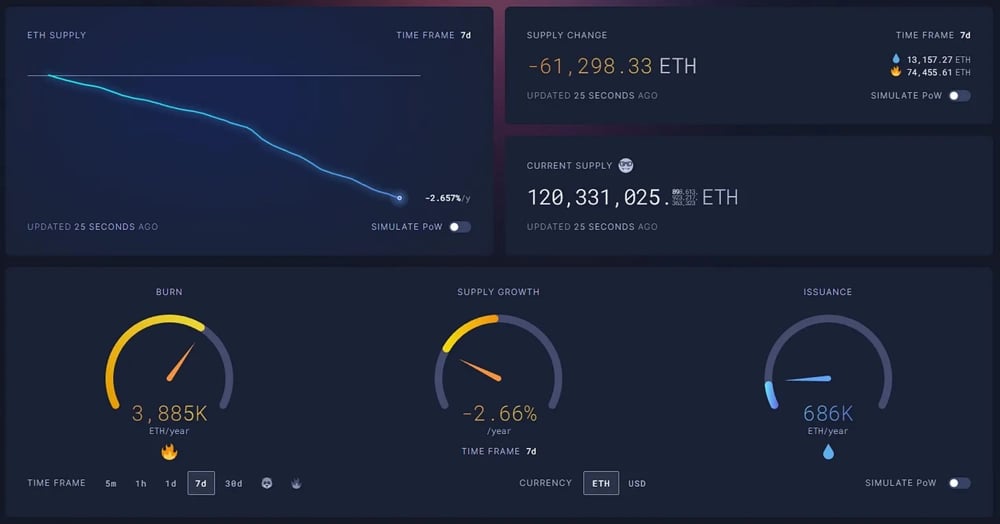
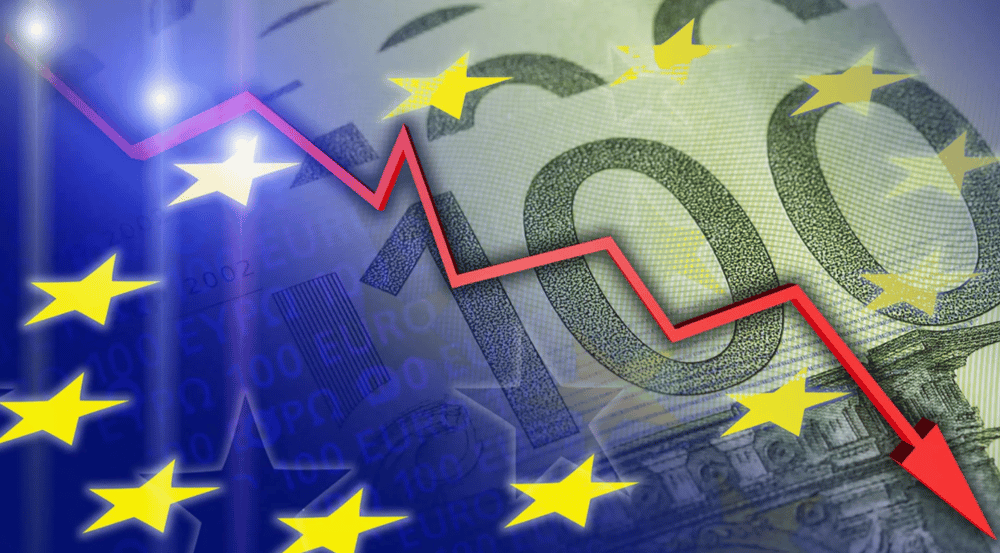
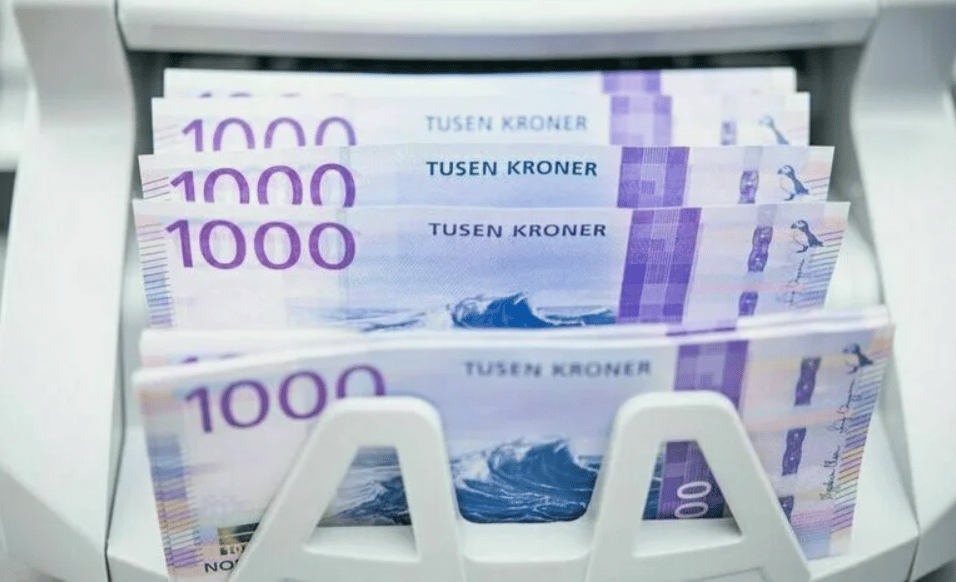




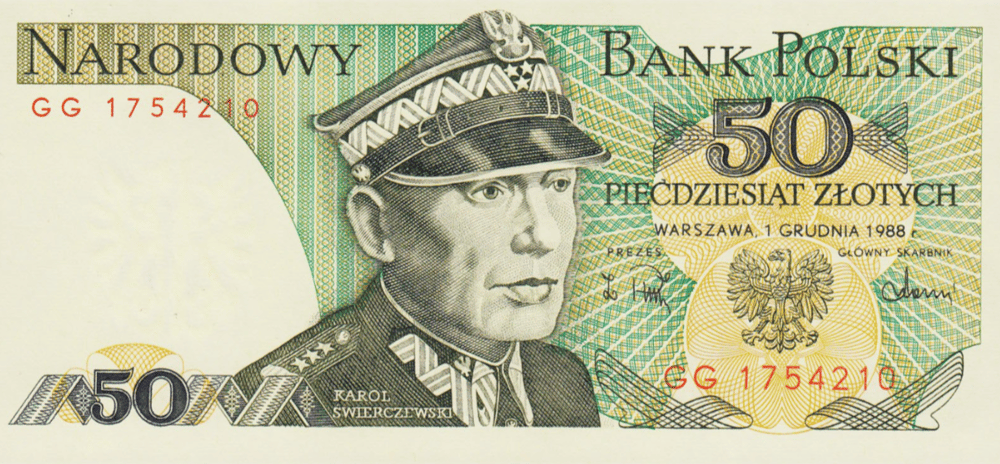
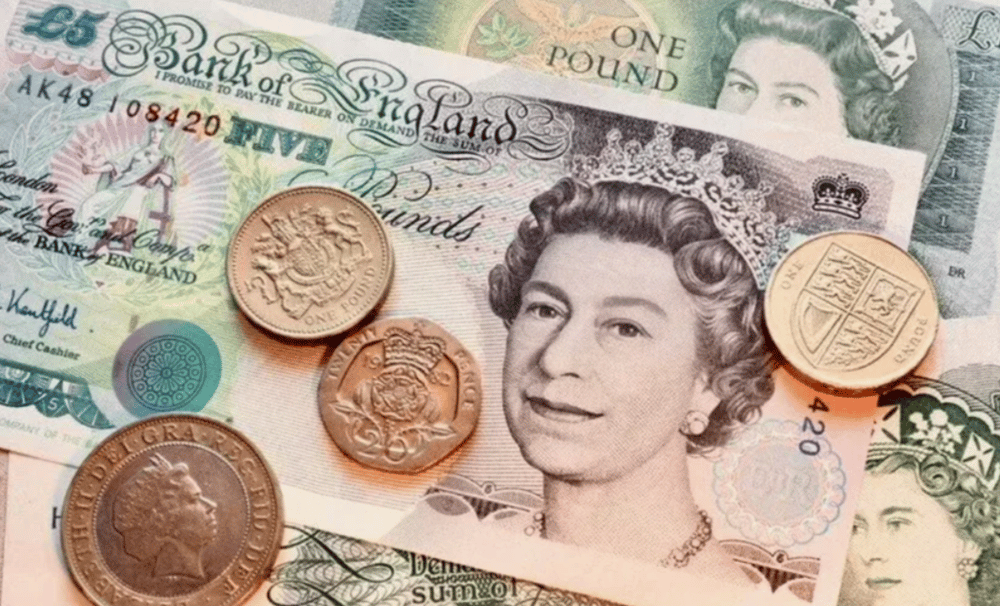
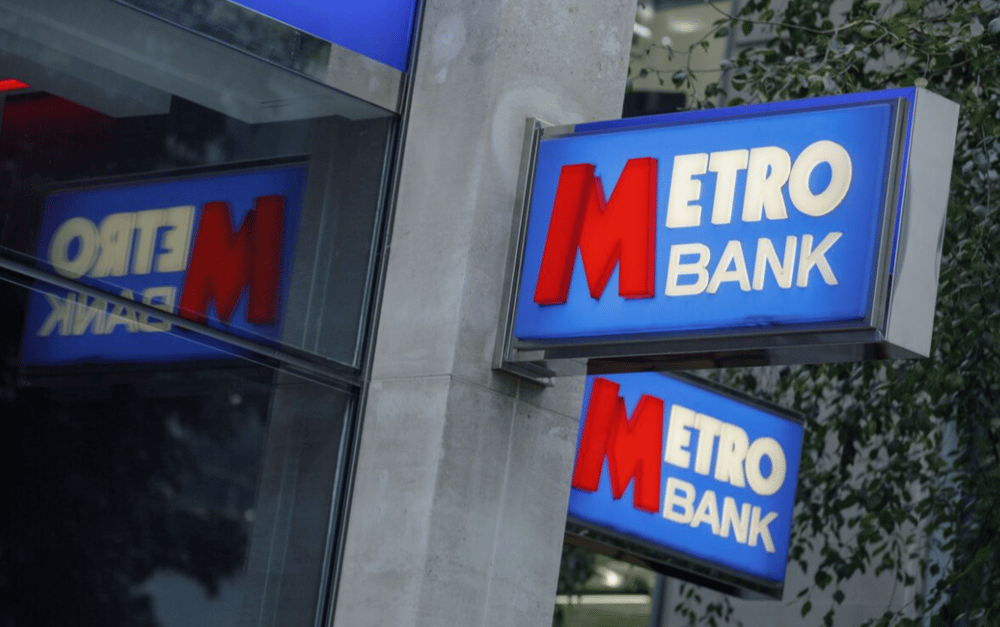


Comments
PAMM accounts are a game-changer for those who want to invest without the stress of trading themselves!
You are welcome 👋